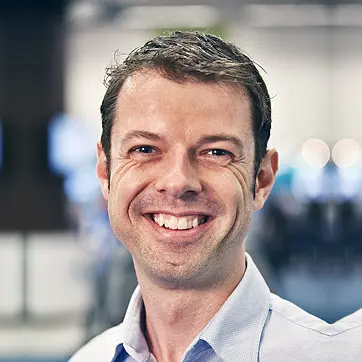Google is finally putting the venerable Average Position metric out to pasture. It’s one of the oldest metrics on the books for PPC pros and a mainstay on client reports for many years. After all these years, did the metric really help? Maybe not that much.
Many PPC pros have become a bit numb to changes from Google. Seems like we spend a great deal of our time just keeping up with the updates and new features they seem to constantly toss into the PPC world. And while it may seem Google is haphazard in making changes, I can tell that as a former Googler, they are very purposeful and methodical about altering our shared universe. It just isn’t always evident why they do so.
Average Position, however, has held a place in our common PPC vernacular longer than most metrics. Yet saying goodbye to this old friend later this year really won’t be that difficult.
AP just wasn’t all that helpful.
Sorry.
In this age of AI-energized PPC, Average Position has become little more than a vague barometer of conditions in a PPC program when PPC pros need actionable, granular data to make specific and smart decisions.
AP was of rapidly diminishing value when you consider the vast amount of highly specific performance data from which we can pull.
Google is replacing Average Position with the following more precise metrics to identify those opportunities to get more impressions at the top:
- Impressions (Absolute Top) %, which tells us more precisely about the impressions at the very top of the page.
- Impressions (Top) %, which denotes performance above the organic results.
In addition, two metrics help give critical insight into what we actually should optimize to get there (which AP never told us):
- Search Absolute Top IS, which tells us the percentage of opportunities to appear at the absolute top that we’re actually turning into impressions in that space.
- Search Top IS, which does the same, but with regard to opportunities appearing above the organic results.
Here’s what it will look like in your Google Ads Manager:
You’ll be able to easily select the more exacting metrics to meet your needs and start to get much more granular as you assess strategies and determine the best optimizations.
If you want to dig into very specific scenarios that show where the soon-to-be-retired Average Position metric could lead to confusion, check out my recent Search Engine Journal contributed post.
In that SEJ post, we examine real-world case studies that demonstrate how these new metrics also bring new importance to the trusty old Quality Score. It’s worth a read.
Okay…shouldn’t we just optimize impression share by adjusting bids?
Given the greater view into Impression Share vs. Average Position with the new metrics, it could be easy for some PPC pros to jump on the “fix it by changing the bid” approach.
Pause please.
For an ad to appear at the top of the page, it needs to meet certain relevance and Ad Rank thresholds that are set by Google. The levels of these thresholds are not published so it can be a game of trial-and-error. It’s worth remembering, however, that Google really wants ads to be relevant, so you may need to set an exorbitantly high CPC to get an ad with low QS to move to the top of the page.
A smarter optimization will address QS issues first, for example, by moving the low QS keyword to an ad group by itself (this is called a SKAG – single keyword ad group.) This is a good way to fix QS issues because it lets you write an ad and pick a landing page that are optimized for that unique keyword.
Once the quality of the keyword and the ad are fixed, you may be able to gain the desired top position with a much smaller bid increase than if you’d skipped the QS optimization.
How a PPC pro can stay on top of things
First, it’s important to start tapping into the new metrics that will replace the aging Average Position. AP goes into retirement in September, but it’s not really doing us much good anyway. Send our old friend a “happy retirement” card and then make the shift today. Start to understand the improved insight and how it will help you make decisions.
Second, keep tuned in to Optmyzr. Our dev teams are always working with the never-ending changes that come from Google (and Bing – and other platforms) to automate optimizations and simplify the tasks and decisions you need to make. The more changes they create and the more they automate, the more confusing things can get for even the most advanced PPC rockstars.
We welcome the ongoing changes in the platforms, in particular the innovations by the big search engines thanks to artificial intelligence and machine learning. The challenge for the practitioner in the trenches, however, is keeping up with all of these changes and integrating them into new and existing strategies, something we hope to help you with!









